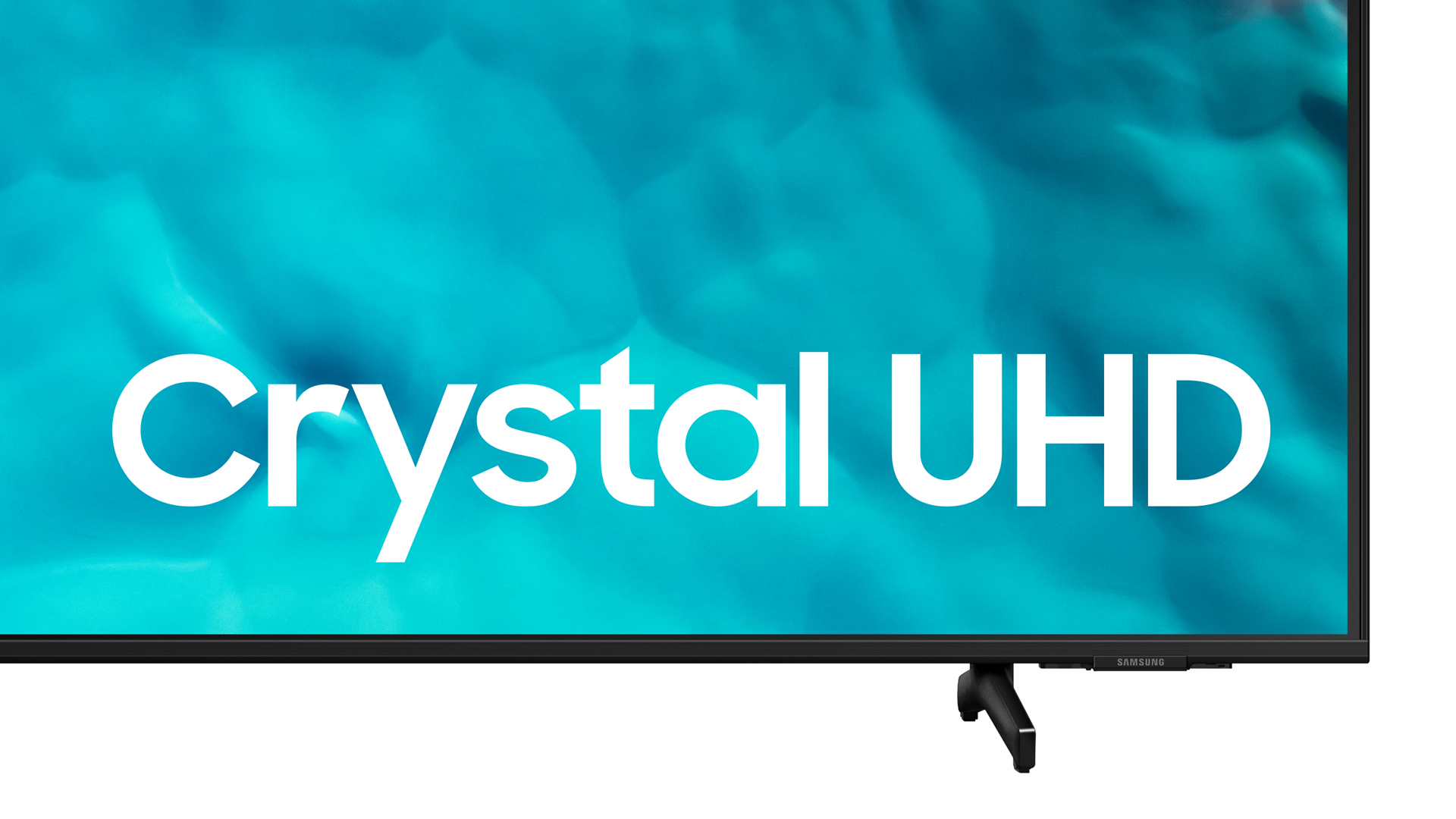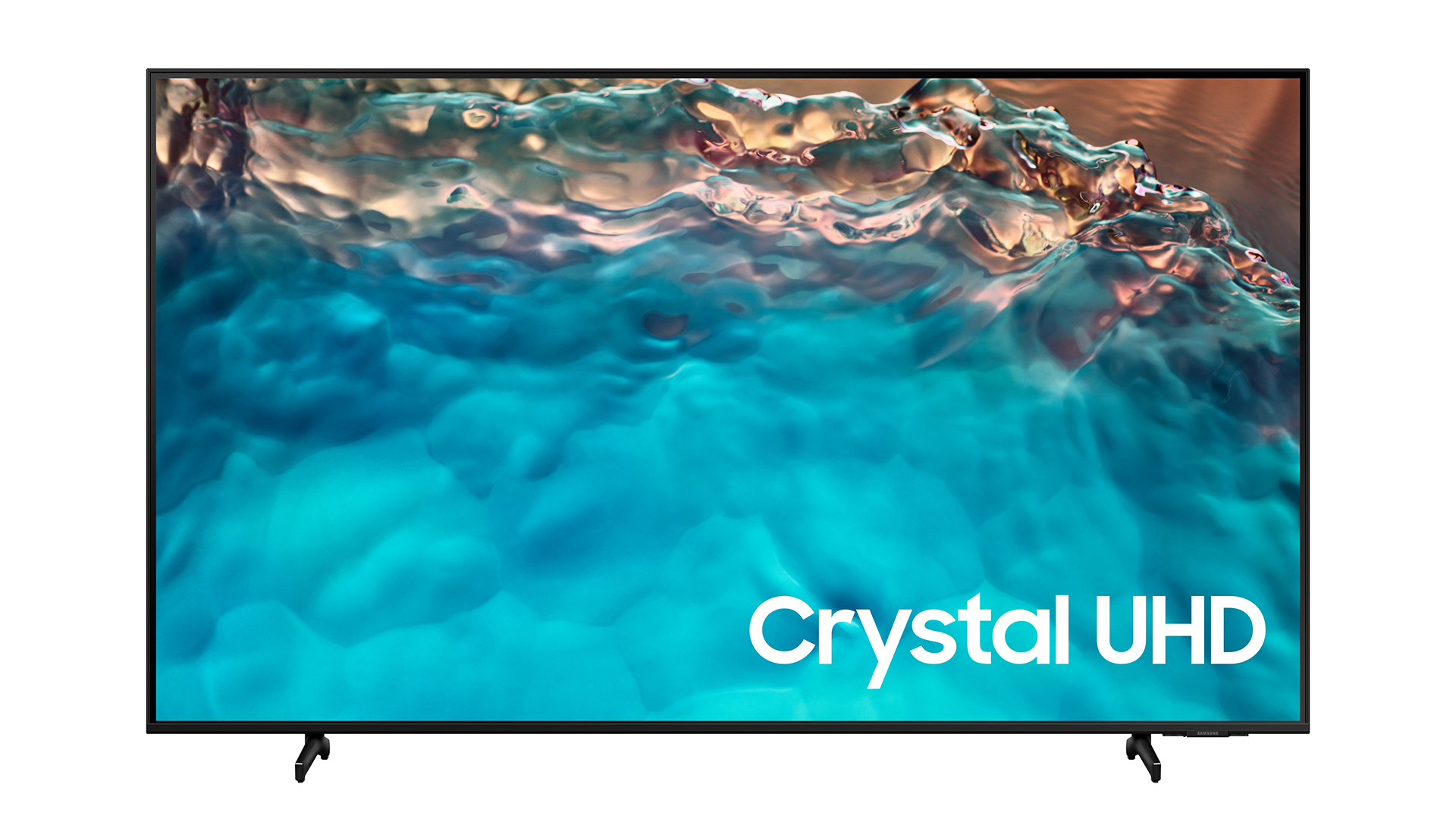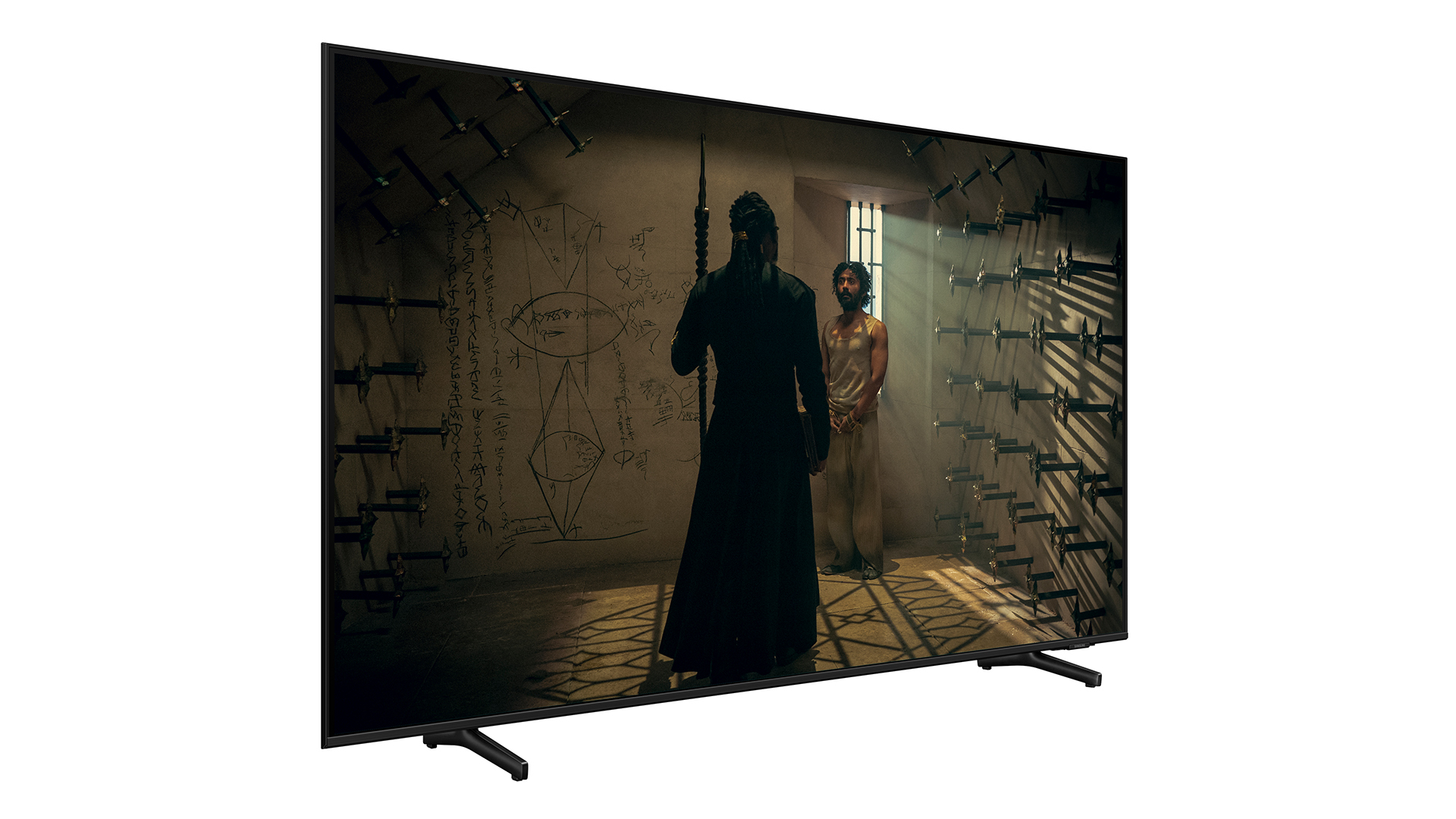What Hi-Fi? Verdict
With its rather bland pictures and feeble sound, the UE50BU8000 feels like a step backwards for Samsung’s entry-level range
Pros
- +
Aggressive price
- +
Reasonable contrast for the money
- +
Comprehensive smart system
Cons
- -
Picture lacks sharpness and punch
- -
Colour compression in dark scenes
- -
Wimpy movie sound
Why you can trust What Hi-Fi?
While it's easy to get lost in the heady heights of Samsung's flagship Neo QLED and QD-OLED TVs, we always tried to stay grounded and give attention to Samsung's LCD TVs that underpin a large sector of the lower-end market. Usually, these TVs nail the sweet spot between keeping costs low while maintaining an enjoyable picture performance - just look at 2021's AU7100 as an example of a great Samsung TV that doesn't break the bank.
With hopes high after that roaring success from Samsung, we're ready for round two, however, that enthusiasm quickly diminishes when we turn on the TV and start watching. Unfortunately, the Samsung UE50BU8000 isn't the sequel we were hoping for, even at that alluring price.
Price
Once upon a time the UE50BU8000’s £469 / AU$995 (around £575) price would have looked ridiculously good value. These days, though, the arrival of ever improving competition from brands such as Toshiba, Hisense and TCL actually sees the UE50BU8000 sitting at the relatively upper end of the budget 50-inch TV bracket. Though if it edges the best of those rival brands on performance, as Samsung traditionally has, then it can still win the overall value battle.
The UE50BU8000 costs the same with most retailers as Samsung’s UE50BU8500. Which is as it should be, really, given that both models are identical apart from the BU8500 resting on a central pedestal stand while the BU8000 is mounted on separate blade-style feet.
We have seen some minor price differences between the BU8000 and BU8500 at other screen sizes, but these always break in the BU8000 model’s favour.
One key rival worth pointing out in this section is the TCL 55C735K, which is available for £549 (around $674 / AU$975) in January 2023, despite giving you five inches of extra picture and a full set of the latest gaming features.
Design

The UE50BU8000 doesn’t set a great first impression by feeling pretty lightweight when you’re putting it together. There’s a lot of plastic and not much else going on here.
The latest hi-fi, home cinema and tech news, reviews, buying advice and deals, direct to your inbox.
Its screen bezel is a bit ‘budget special’, too, with its slightly chunky width and a brushed finish that’s probably supposed to conjure up thoughts of brushed metal but really just looks like what it is: plastic with thin horizontal lines in it.
It does retain a very trim ‘AirSlim’ rear end despite its budget position, though, making it an unusually good wall mount option. The brushed finish is more effective on the rear panel than it is the screen frame, too – though as always when discussing a TV’s ‘360-degree’ design, we’re bound to stress that the vast majority of sane people will spend next to no time looking at the back of their TV once they’ve connected everything up.
The BU8000 sits on rather plain-Jane blade-style feet tucked towards each corner, rather than boasting a helpful centrally-mounted pedestal like most screen size options of the BU8500.
Do also note that the BU8000 joins the BU8500 in not benefitting from the Ambient Mode feature found on all Samsung’s higher up models, whereby the screen can be set to play photographs, digitised artworks or short videos rather than leave behind a black screen when you’re not actually watching the TV.
Features

To reiterate this point, the BU8000 is the same as the BU8500 except for swapping the latter’s central stand for a pair of feet. If you’ve read our recent review of the 55-inch BU8500 you can, therefore, skip the rest of this section if you wish. But for everyone else, here’s a recap of what you can expect.
The UE50BU8000 is a native 4K TV that supports HDR in the HDR10, HLG and HDR10+ flavours. Samsung continues to snub Dolby Vision, though, despite the format’s popularity elsewhere.
Its panel is a VA type, raising hopes of decent contrast but, predictably, meaning that you’ll see colours and contrast start to reduce if you have to watch the screen from much of an angle from the side.
The panel is illuminated from its edges, rather than having lights positioned directly behind it. This no doubt helped Samsung achieve the UE50BU8000’s AirSlim design, but edge lighting can struggle to control where the light goes as well as LED lighting systems that are placed directly behind the screen.
Connectivity includes three HDMIs and two USBs, but gamers should note that there’s no support for 4K/120Hz graphics (the screen only runs at 50/60Hz), or VRR. This lack of advanced gaming support is hardly surprising at the BU8000’s price level, though it’s worth reflecting that the TCL 55C735K offers both 4K/120Hz and VRR.

Screen size 50 inches (also available in 43in, 55in, 65in, 75in, 85in)
Type LCD with Edge LED backlight
Resolution 4K
HDR formats HLG, HDR10, HDR10+
Operating system Tizen/Eden
HDMI inputs x3
HDMI 2.1? No
Gaming features ALLM
ARC/eARC eARC
Optical output? Yes
Dimensions (hwd, without stand) 64 x 112 x 2.6cm
Samsung’s set can, though, automatically switch into its fast-responding Game preset when it detects that a source compatible with HDMI’s ALLM switching feature has started to play a game. That Game preset gets picture lag down to a brilliantly speedy 9.8ms, too, while gamers may also be keen to explore the TV’s Gaming Hub, which brings together Samsung’s peerless roster of streamed gaming sources.
The BU8000 benefits from Samsung’s Dynamic Crystal Colour technology, which claims to use ‘advanced phosphor technology’ together with Crystal Processor 4K silicon to deliver an "Ultra HD colour palette that’s as rich and wonderful as nature itself". Which is poetic marketing speak for a claimed billion-strong colour tone count.
Samsung usually manages to run the same smart interface on its budget TVs that it delivers on its flagship models, and so it proves with the BU8000. This is something of a mixed blessing this year, since while the revamped interface still plays host to a colossal amount of content including all the world’s favourite streaming services, the new full-screen home menu doesn’t do a great job of highlighting genuinely useful content, and isn’t as customisable or logical in its navigation – especially when it comes to integrating the TV’s set-up options – as the previous interface was.
Picture

Despite the UE50BU8000 using the same panel set-up (apart from size) and picture features as the previously reviewed UE55BU8500, its pictures aren’t quite identical. In fact, they’re slightly worse, and for one key reason: backlight clouding.
We did spot some signs of this with the UE55BU8500, too, but the issue is brighter and impacts more of the screen area on the UE50BU8000, at least while watching high dynamic range content. This can be seriously distracting, drawing your attention away from what you’re supposed to be watching as a dark scene unfolds. The clouding can hide shadow details in its extra greyness, too, and it contributes to some small colour uniformity issues as the grey areas slightly adjust the hue of any dark colours that appear behind them.
This is particularly frustrating given that the UE50BU8000’s native black levels are actually good for its money – but if anything, the impressive black levels actually serve to make the clouding more apparent.
This clouding issue with HDR sources is much less likely to appear with SDR content; in fact, its good native contrast makes it a rather good SDR display.
We’d usually expect a Samsung TV, though – even one as affordable as the BU8000 – to be in its element relative to its rivals with HDR. Yet on top of the backlight clouding problem, the 50BU8000 also just looks a little dull with HDR compared with some TVs in its price range. Its base brightness isn’t bad for the money, but it just doesn’t combine that brightness with enough dynamism or colour saturation to really make HDR (literally) shine. This is felt – including in direct comparisons with similarly affordable rivals such as the Toshiba 50UK4D63DB and TCL 55C735K – with both full-screen bright HDR content and its slightly lacklustre look to brightness peaks.
Relatively dark HDR content on the BU8000 also reveals a slightly compressed, unrefined look to low-brightness, densely detailed picture areas, such as the hedges and flower beds outside Georgie’s house in the opening scene of It on 4K Blu-ray.
To throw a few more positives the way of the BU8000’s HDR performance, while it's not as relatively bright as hoped, there is enough brightness around to register at least a sense of a visual shift when you switch from SDR to HDR content. The Movie picture preset delivers a nicely warm, rounded and nuanced look that feels more refined than the punchier but occasionally over-enthusiastic looks of the best budget rivals, and while Samsung’s motion handling isn’t as far ahead of the budget pack as it used to be, it is at least unusually impressive at not generating unwanted processing side effects.
For the most part, though, the UE50BU8000’s ‘journey’ from SDR to HDR is more illustrated by the issues HDR causes than the clear positive difference we’d have expected.
One last issue of note is that the BU8000 doesn’t look as sharp with native 4K content as we would normally see with Samsung TVs. Again, we noticed this too with the BU8500, but strangely – maybe because of the impact of its extra backlight clouding – we noticed the softness more on the smaller model. It perhaps doesn’t help, either, that Toshiba’s 50-inch UK4D63DB proves a strong rival when it comes to 4K sharpness.
Sound

The comparisons with rival budget TVs continue to do the Samsung BU8000 no favours when it comes to sound. Its speakers are severely short of volume and projection (especially versus the Toshiba 50UK4D63DB), and produce a much less dynamic mid-range. Anything approaching a big action scene lands with practically no impact at all, sounding thin and utterly unconvincing.
With potent film mixes, in fact, the 50BU8000 only really warrants a two out of five. Fortunately for Samsung, this mark is raised one point by its more poised, clean and easy-on-the-ear handling of the relatively simple and undynamic day to day audio fare that most of us actually spend the bulk of our time listening to.
Verdict
Average pictures and sound together with aggressive advances from rival budget brands mean the UE50BU8000 joins the UE55BU8500 in giving us the feeling that Samsung is not just merely treading water right now with its budget LCD range, but is actually dipping slightly below the waves.
SCORES
- Features 3
- Picture 3
- Sound 3
MORE:
Read our review of the Samsung QE55Q60B
Also consider the Toshiba 50UK4D63DB
Read our TCL 55C735K review
Best cheap TVs: the best 4K TVs under £500
John Archer has written about TVs, projectors and other AV gear for, terrifyingly, nearly 30 years. Having started out with a brief but fun stint at Amiga Action magazine and then another brief, rather less fun stint working for Hansard in the Houses Of Parliament, he finally got into writing about AV kit properly at What Video and Home Cinema Choice magazines, eventually becoming Deputy Editor at the latter, before going freelance. As a freelancer John has covered AV technology for just about every tech magazine and website going, including Forbes, T3, TechRadar and Trusted Reviews. When not testing AV gear, John can usually be found gaming far more than is healthy for a middle-aged man, or at the gym trying and failing to make up for the amount of time he spends staring at screens.

